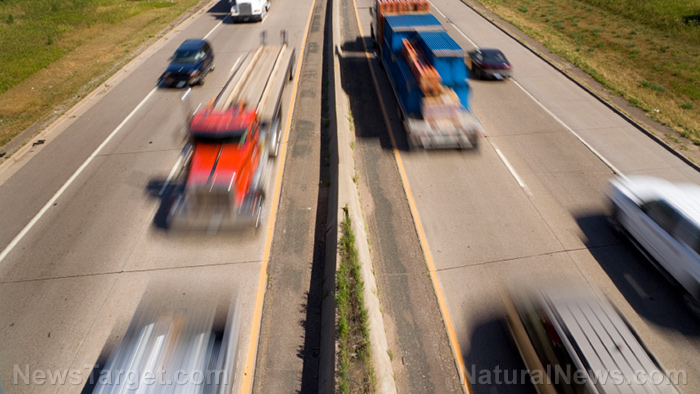New AAA survey shows rise in dangerous driving behaviors on American roads
12/09/2022 / By Cassie B.

A new survey shows that American drivers have been taking significantly more risks on the road after the pandemic, including driving under the influence of alcohol or drugs, running red lights, and driving aggressively.
According to AAA, 7.3 percent of drivers report driving at a time when they believed they were above the legal limit for alcohol consumption. This marks a 23.3 percent increase over 2020’s figure. Meanwhile, 5 percent of drivers admitted that they had driven within an hour of using cannabis in a rise of 13.4 percent.
Those aren’t the only dangerous driving behaviors that people admitted to, however. Running red lights increased 10.1 percent, and aggressive driving such as tailgating and quick lane changes rose 7.5 percent. Although half of drivers said they believed that speeding 15 miles per hour or more above the posted speed limit on a freeway was dangerous, that behavior rose 12.4 percent from 2020 to 2021, and more than half of drivers admitted they had done so within the 30 days leading up to the survey.
Meanwhile, 18.8 percent of drivers admitted to driving when they were so tired they struggled to keep their eyes open, in an 8.7 percent rise over the year before. This is despite 95 percent of drivers saying they believed drowsy driving was dangerous.
After falling for seven years, 6.8 percent more drivers admitted to using handheld devices while driving despite 92 percent acknowledging that doing so is very or extremely dangerous.
These increases come after a three-year period of steady declines. It is worth noting that the survey refers to self-reported behavior; the actual figures are likely much higher as many individuals may not have been willing to admit to engaging in dangerous driving.
AAA Northeast Director of Public Affairs Diana Gugliotta said: “The reversal in the frequency of U.S. drivers engaging in risky driving behavior is disturbing. While drivers acknowledge that certain activities behind the wheel – like speeding and driving impaired, are not safe, many still engage in these activities anyway.”
These self-reports of increasingly risky driving behavior come as the U.S. noted a 10.5 percent rise in traffic deaths in 2021. The 42,915 fatalities recorded in 2021 marked a 16-year high. The National Highway Traffic Safety Administration said that risky driving behaviors played a role in a considerable number of these deaths.
Most dangerous states for drivers identified
Meanwhile, a recent report by Forbes Advisor identified the most dangerous states for drivers. To reach their conclusion, they analyzed five key metrics, including the total number of individuals killed per capita, the number of deadly car accidents per capita by state, the percent of accidents arising from negligent driving, and the percentage of change in fatalities from 2019 to 2020.
Their analysis revealed that Montana was the most dangerous state in which to drive in the U.S., with South Carolina taking second spot and Wyoming coming in third. Missouri and New Mexico rounded out the top five, with South Dakota, Texas, Arkansas, Louisiana and North Carolina coming in positions five through ten. The top three safest states to drive, according to the analysis, were New Jersey, Massachusetts and Utah.
The good news is that many accidents can be avoided by acting responsibly behind the wheel. This means following posted speed limits and avoiding driving while drowsy or impaired.
With accidents on the rise and so many American drivers engaging in risky behavior, AAA points out that it is important to know what to do in the event of a car accident. After checking for injuries, you should call 911 and stay on the scene. If there are no injuries and it is safe to do so, move your vehicle away from moving traffic and turn on your hazard lights. Be sure to exchange information with everyone involved in the accident, take photos of the scene, and contact your insurance company.
Sources for this article include:
Submit a correction >>
Tagged Under:
addiction, alcohol, car accidents, Dangerous, driving, drugs, honest, insanity, national security, public safety, risks, society, stupid, survey
This article may contain statements that reflect the opinion of the author
RECENT NEWS & ARTICLES
COPYRIGHT © 2017 NATIONAL SECURITY NEWS





















